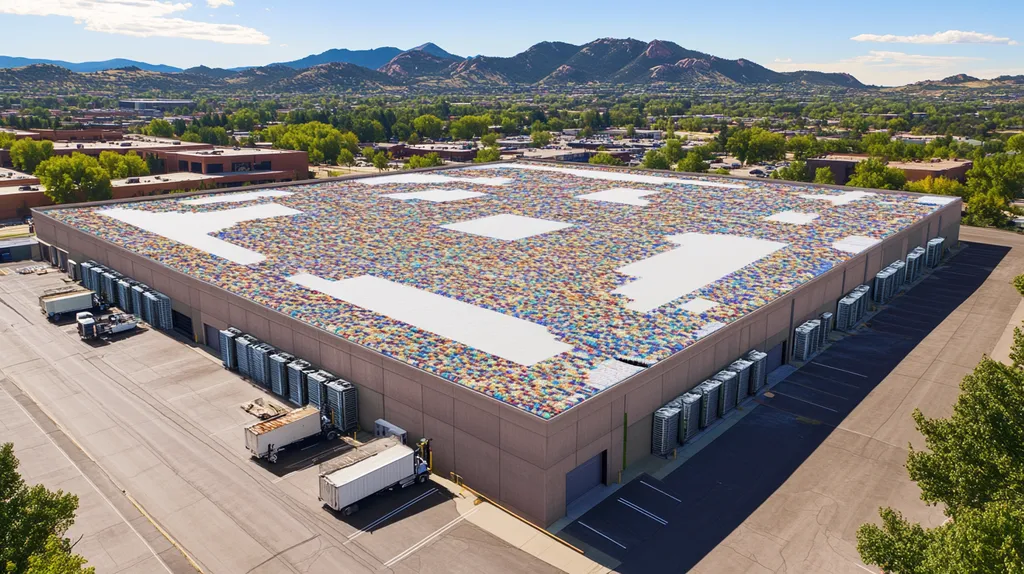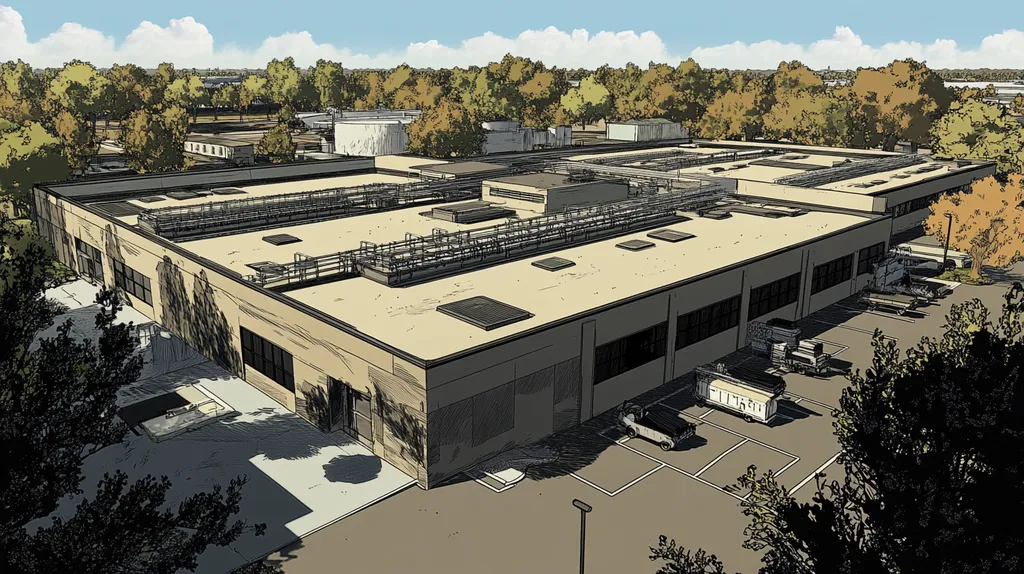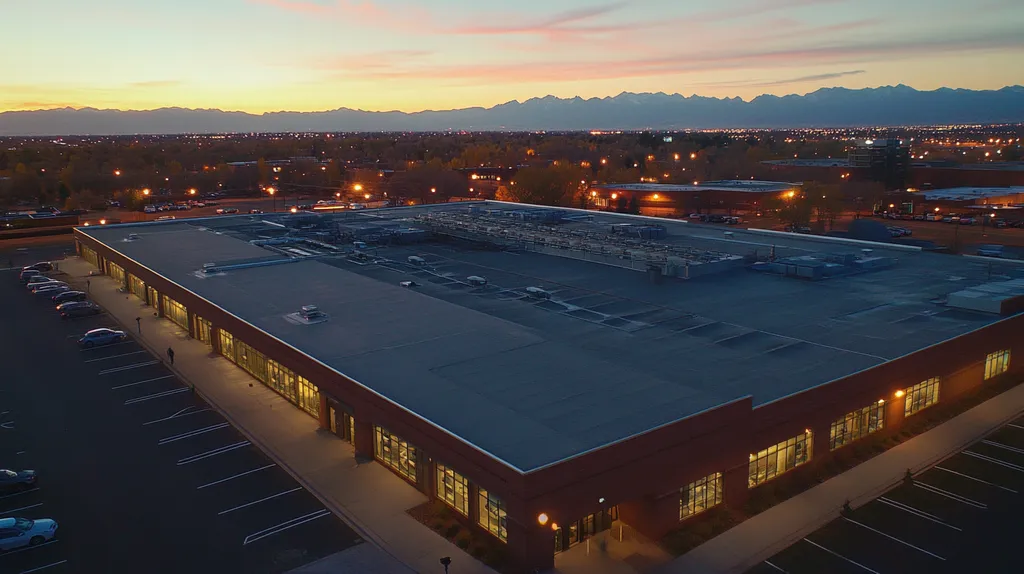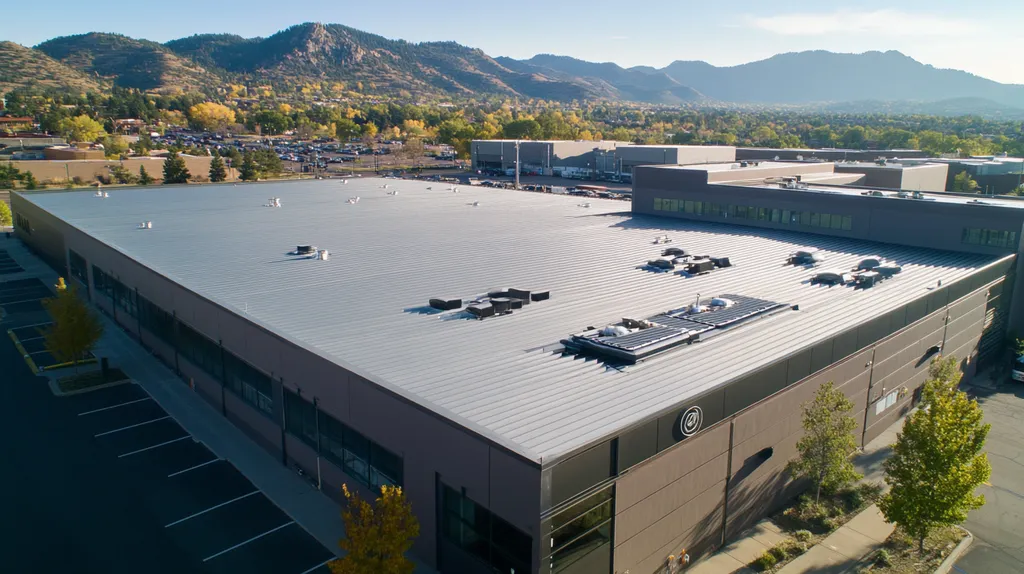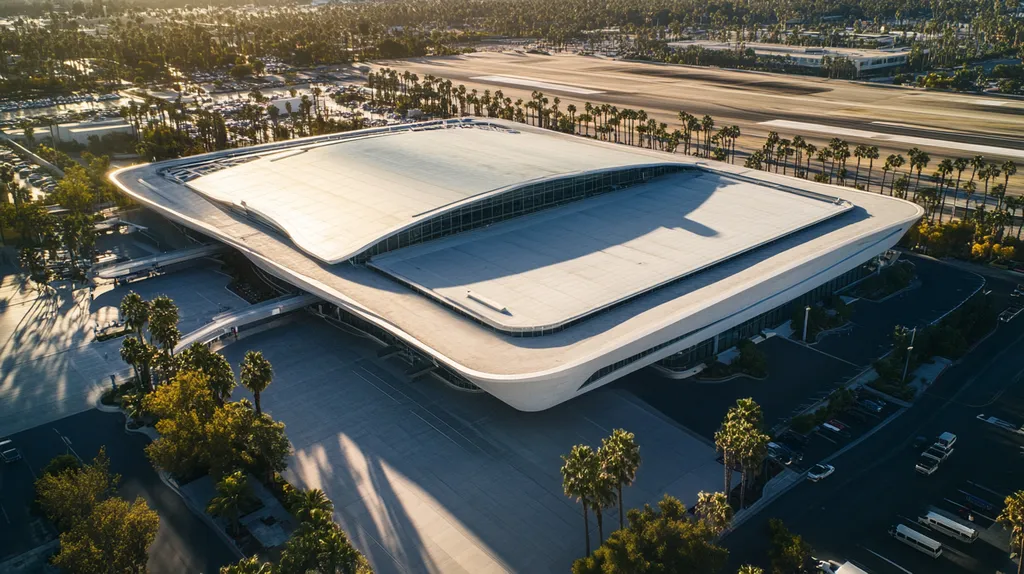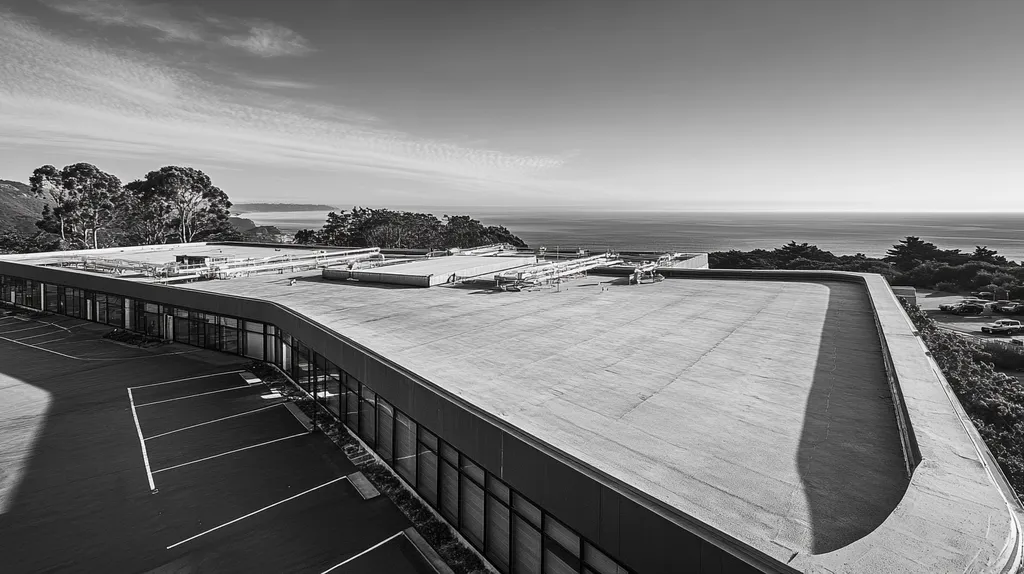In industrial roofing, proper safety protocols spell the difference between successful installations and potential catastrophes. Industry data shows that roofing accidents account for 34% of all construction-related falls, resulting in over $1 billion in annual costs from injuries, project delays, and legal settlements.
For facility managers and property owners, understanding essential safety protocols isn’t just about compliance – it’s about protecting lives while ensuring project efficiency and building integrity. This comprehensive guide examines critical safety requirements, from fall protection systems to emergency procedures, providing actionable insights for safer roof installations.
SECTION 1: THE BASICS EXPLAINED
Industrial roofing installations present significant safety challenges that demand rigorous protocols. Recent data shows that roofing accidents account for a disproportionate number of workplace injuries and fatalities in the construction sector. Beyond protecting workers, proper safety measures safeguard property investments and ensure timely project completion. Understanding these fundamental protocols is essential for property owners and facility managers who oversee roofing projects.
What It Is (In Plain Language)
Safety protocols for industrial roofing are comprehensive systems designed to protect workers, equipment, and property during installation. These protocols establish clear guidelines for every aspect of the roofing process, from material handling to emergency procedures.
Warning line systems represent a critical component of these protocols. These systems must be installed at least 6 feet from the roof edge and consist of ropes, wires, or chains with supporting stanchions that can resist 16 pounds of force without tipping. (source: OSHA)
Additional elements include personal protective equipment requirements, weather monitoring procedures, and communication systems. These components work together to create a safety framework that minimizes risks while maximizing efficiency.
Why It Matters (To Your Building)
Proper safety protocols directly impact a building’s operational continuity and financial health. When accidents occur, projects face immediate shutdowns, resulting in extended completion timelines and increased costs.
Insurance carriers scrutinize safety records when determining coverage and premiums. Buildings with documented safety violations often face higher insurance costs or coverage limitations.
Safety protocols also affect long-term maintenance costs. Properly protected workers can focus on quality installation, reducing the likelihood of future repairs or premature replacement needs.
How It Works
Implementation begins with a detailed site-specific safety plan that identifies potential hazards and outlines mitigation strategies. This plan must account for unique building characteristics and environmental factors.
Daily safety briefings ensure all workers understand their responsibilities and current site conditions. These meetings cover weather forecasts, equipment checks, and specific tasks planned for the day.
Continuous monitoring by designated safety personnel ensures compliance with established protocols. These individuals conduct regular inspections and maintain documentation of safety measures.
Regular updates to protocols reflect changing conditions and incorporate lessons learned from previous installations. This dynamic approach helps maintain effectiveness while addressing emerging safety challenges.
SECTION 2: PRACTICAL APPLICATIONS
Safety protocols in industrial roofing represent the critical difference between successful installations and potential disasters. Recent industry data shows that roofing accidents remain among the leading causes of workplace fatalities, with falls accounting for over one-third of construction-related deaths. Understanding and implementing proper safety measures isn’t just about compliance – it’s about protecting lives while ensuring project efficiency and building integrity.
Common Uses & Examples
Every successful industrial roof installation begins with comprehensive fall protection systems. Warning line systems must be installed at least 6 feet from the roof edge, or 10 feet when using mechanical equipment, with proper flagging every 6 feet using high-visibility materials. These systems require stanchions capable of withstanding 16 pounds of force without tipping. (source: OSHA)
Personal protective equipment requirements form another crucial safety layer. This includes proper harnesses, non-slip footwear, and protective headgear designed specifically for roofing work.
Designated safety zones and access points help control movement across the work area. These zones include clearly marked pathways, material staging areas, and restricted sections where special precautions are required.
Regular safety audits and equipment inspections ensure all protective measures remain effective throughout the project duration. These checks identify potential issues before they become serious problems.
When You Need It Most
Heightened safety protocols become especially critical during specific installation phases. These include initial roof access setup, working near edges or penetrations, and material hoisting operations.
Weather conditions significantly impact safety requirements. Wind speeds, precipitation, and temperature extremes all require additional protective measures and may necessitate work stoppages.
Multiple trade coordination periods demand extra vigilance. When mechanical, electrical, or plumbing contractors share the roof space, comprehensive safety protocols prevent cross-trade accidents.
Emergency response procedures must be readily accessible during high-risk activities. These include clear evacuation routes, first aid stations, and communication systems for immediate response.
Interactions With Other Systems
Safety protocols must integrate seamlessly with building mechanical systems. This includes proper isolation procedures for HVAC units, solar installations, and other rooftop equipment during work periods.
Fire safety systems require special consideration during installation. Access to standpipes, fire suppression equipment, and emergency exits must remain unobstructed while maintaining worker protection.
Lightning protection systems present unique safety challenges. Installation teams must coordinate their protective measures with existing lightning protection components to maintain both safety and system integrity.
Communication systems play a vital role in safety protocol effectiveness. Two-way radios, emergency signals, and monitoring equipment must function reliably throughout the installation process.
SECTION 3: KEY TERMINOLOGY DECODED
Clear understanding of roofing terminology directly impacts workplace safety and project success. Studies show that miscommunication of technical terms contributes to over 20% of industrial roofing accidents. For property owners and facility managers, mastering essential terminology enables better oversight of installation projects and helps ensure compliance with critical safety standards.
Essential Terms Explained
Fall protection systems form the cornerstone of roofing safety terminology. These systems include guardrails, safety nets, and personal fall arrest systems that protect workers from potentially fatal falls.
Warning line systems must be erected at least 6 feet from the roof edge, or 10 feet when using mechanical equipment. These systems require high-visibility flags every 6 feet and must maintain a minimum tensile strength of 500 pounds. (source: OSHA)
Personal protective equipment (PPE) encompasses required safety gear including fall protection harnesses, non-slip footwear, and impact-resistant helmets. Understanding these requirements helps ensure proper equipment selection and usage.
Load capacity refers to the maximum weight a roof structure can safely support during installation. This includes both static loads from materials and dynamic loads from worker movement and equipment.
Industry Jargon Translated
Penetrations describe any holes or openings in the roof surface that require special attention during installation. These include vents, pipes, and HVAC units that must be properly sealed and protected.
Substrate refers to the underlying surface to which roofing materials are attached. Understanding substrate conditions is crucial for selecting appropriate fasteners and ensuring proper adhesion.
Control zones establish designated areas for specific activities during installation. These include material staging areas, access points, and restricted sections requiring additional safety measures.
Dead loads versus live loads distinguish between permanent weight (like HVAC units) and temporary weight (like workers and equipment). This distinction affects safety calculations and installation planning.
Measurement & Units Simplified
Roof pitch expresses slope as a ratio of vertical rise to horizontal run. A 4:12 pitch means the roof rises 4 inches for every 12 inches of horizontal distance, determining required safety measures.
Square footage calculations incorporate both the main roof area and additional surface area created by features like parapets and mechanical curbs. This affects material quantities and worker coverage areas.
Wind uplift resistance measures how well roofing systems withstand wind forces. Ratings are expressed in pounds per square foot (psf) and dictate installation requirements for different building zones.
Load point distribution describes how weight concentrates at specific roof locations. Understanding these patterns helps prevent overloading during material staging and installation work.
SECTION 4: DECISION FACTORS
Safety decisions in industrial roofing carry significant financial and operational implications. Recent industry data shows that roofing accidents result in over $1 billion in annual costs from medical expenses, lost productivity, and legal settlements. Making informed choices about safety protocols requires careful evaluation of multiple factors that affect both immediate installation success and long-term building performance.
Cost Considerations
Initial safety investments often face scrutiny during budget planning. While basic fall protection systems may seem adequate, comprehensive safety protocols require additional equipment, training, and supervision that impact project costs.
Warning line systems represent a critical safety investment. These systems must be installed at least 6 feet from roof edges during standard work, extending to 10 feet when using mechanical equipment, and require stanchions capable of withstanding 16 pounds of force without tipping. (source: OSHA)
Insurance premiums directly reflect safety protocol implementation. Buildings with documented comprehensive safety measures typically qualify for lower rates and broader coverage options.
Long-term cost analysis reveals that proper safety investments reduce expensive work stoppages, injury claims, and regulatory fines that can devastate project budgets.
Performance Trade-offs
Safety protocol selection impacts installation efficiency and quality. While more rigorous safety measures may extend project timelines, they enable workers to focus on proper installation techniques without compromising personal safety.
Material handling procedures affect both worker safety and installation quality. Proper safety protocols ensure materials remain undamaged during positioning while protecting workers from strain injuries.
Weather protection requirements illustrate key trade-offs. Enhanced safety measures during adverse conditions may slow work progress but prevent accidents that could shut down projects entirely.
Equipment accessibility presents another critical consideration. Proper safety protocols may limit certain equipment positioning options but ensure stable working conditions for quality installation.
Lifespan & Durability Factors
Safety protocol decisions influence roof system longevity. Proper worker protection during installation enables thorough attention to detail, resulting in better seam quality and flashings that extend roof life.
Environmental exposure requirements demand specific safety considerations. Protocols must account for UV radiation, chemical exposure, and temperature extremes that affect both worker safety and material performance.
Maintenance accessibility shapes long-term safety needs. Initial safety system design must facilitate future inspection and repair work without compromising protection.
System integration complexity affects safety protocol durability. Safety measures must accommodate various rooftop equipment installations while maintaining effectiveness throughout the roof’s service life.
SECTION 5: COMMON CHALLENGES
Safety challenges in industrial roofing installations demand immediate attention, with industry statistics showing that roofing accidents account for 34% of all construction-related falls. These incidents not only threaten worker safety but also impact project timelines and building operations. Understanding and addressing common challenges helps property owners and facility managers maintain both safety standards and operational efficiency during roof installations.
Frequent Problems & Solutions
Warning line systems represent a critical safety requirement that often faces implementation challenges. These systems must be installed at least 6 feet from the roof edge during standard work, extending to 10 feet when using mechanical equipment, with proper flagging every 6 feet and stanchions capable of withstanding 16 pounds of force without tipping. (source: OSHA)
Material staging and distribution problems frequently compromise safety protocols. Establishing designated loading zones and clear pathways helps prevent overcrowding and maintains proper weight distribution across the roof surface.
Communication breakdowns between ground crews and roof teams create dangerous situations. Implementing standardized hand signals and maintaining reliable two-way radio systems ensures clear coordination during critical operations.
Equipment malfunctions pose significant safety risks during installation. Regular maintenance checks and backup equipment availability help prevent dangerous improvisations that often lead to accidents.
Warning Signs To Watch For
Worker fatigue indicators, including slower response times and decreased attention to detail, signal potential safety risks. Implementing mandatory rest periods and task rotation helps maintain alertness during demanding installation phases.
Weather-related warning signs require immediate response. Monitoring wind speeds, precipitation forecasts, and temperature changes helps teams anticipate and prepare for challenging conditions.
Equipment wear patterns often precede serious failures. Daily inspections of hoisting equipment, safety lines, and fall protection gear help identify potential issues before they cause accidents.
Changes in material behavior or appearance can indicate unsafe conditions. Watching for membrane displacement, adhesive setting problems, or unusual material aging helps prevent installation failures.
Preventative Approaches
Pre-installation safety audits identify potential challenges before work begins. These assessments examine structural conditions, access points, and equipment requirements to develop targeted safety protocols.
Training documentation systems track worker certifications and safety education. Regular updates ensure all team members maintain current knowledge of safety requirements and emergency procedures.
Emergency response preparations include clearly marked evacuation routes and rescue equipment placement. Regular drills reinforce proper procedures and identify areas needing improvement.
Quality control integration with safety protocols helps prevent shortcuts during installation. Systematic inspection points throughout the project ensure proper technique without compromising worker protection.
SECTION 6: NEXT STEPS & RESOURCES
Every successful industrial roofing project depends on rigorous safety protocols implemented from day one. Recent industry data shows that roofing accidents result in $3 billion annually in medical costs, lost productivity, and legal settlements. For property owners and facility managers, understanding how to evaluate safety measures, access current standards, and pursue ongoing education makes the difference between project success and potentially catastrophic failure.
Questions To Ask Providers
Begin by requesting detailed documentation of the contractor’s safety training program. This should include frequency of safety meetings, certification records, and specific protocols for different roofing conditions.
Warning line systems require particular scrutiny. These systems must be installed at least 6 feet from the roof edge during standard work, extending to 10 feet when using mechanical equipment, with stanchions capable of withstanding 16 pounds of force without tipping. (source: OSHA)
Evaluate their incident response procedures. Contractors should demonstrate clear protocols for various emergency scenarios and maintain detailed records of past safety performance.
Review their equipment inspection and maintenance schedules. Quality providers maintain comprehensive logs and replace safety equipment before it reaches critical wear points.
Industry Standards & Guidelines
Safety standards evolve continuously to address emerging challenges in industrial roofing. Regular review of current requirements helps property owners maintain compliance and protect worker safety.
Building codes establish minimum safety requirements but shouldn’t be viewed as maximum protection. Leading facilities often implement additional measures that exceed basic standards.
Material manufacturers provide specific safety guidelines for their products. These recommendations account for unique characteristics that affect installation safety.
Industry associations offer updated safety bulletins and technical advisories. These resources help facilities stay current with evolving best practices and new safety technologies.
Further Learning Simplified
Professional development opportunities abound through industry organizations. These include certification programs, safety workshops, and specialized training for specific roofing systems.
Digital learning platforms provide convenient access to safety education. Online courses allow facility managers to enhance their knowledge while maintaining daily operations.
Local roofing associations host regular safety seminars and networking events. These gatherings facilitate knowledge sharing and exposure to regional safety considerations.
Technical publications offer detailed analysis of safety trends and innovations. Subscribing to these resources helps facilities anticipate and prepare for emerging safety challenges.
The Bottom Line
With roofing accidents causing over $1 billion in annual costs and representing 34% of construction-related falls, proper safety protocols aren’t optional – they’re essential for survival.
Every aspect of industrial roof installation, from warning line systems to fall protection equipment, demands strict adherence to established safety standards.
Property owners and facility managers must recognize that comprehensive safety measures protect not just workers, but also project timelines, insurance costs, and long-term building performance.
The most successful installations consistently demonstrate that investing in thorough safety protocols yields significant returns through reduced accidents, enhanced efficiency, and improved installation quality.
Moving forward, staying current with evolving safety standards while maintaining rigorous implementation will remain critical for ensuring successful industrial roof installations.
FREQUENTLY ASKED QUESTIONS
Q. What are basic safety protocols for commercial roof installation?
A. Basic safety protocols include using fall protection systems, proper equipment, and personal protective gear. Implementing these helps minimize accidents and protect workers during the installation process.
Q. How do safety protocols impact industrial roof installations?
A. Safety protocols directly contribute to reducing workplace injuries and improving project efficiency. By adhering to these protocols, contractors can ensure safer working conditions and timely project completion.
Q. What is the significance of warning line systems for industrial roof projects?
A. Warning line systems help establish boundaries on roofs, preventing workers from approaching unprotected edges. These systems are crucial for maintaining safety during installations and minimizing fall risks.
Q. How can decisions on safety protocols affect commercial roofing costs?
A. Decisions regarding safety protocols may initially raise costs but can prevent future expenses. A thorough safety plan ultimately reduces medical costs, work stoppages, and insurance premiums.
Q. What are common safety challenges in industrial roofing?
A. Common challenges include inadequate warning line systems, equipment failures, and poor communication among teams. Addressing these issues is vital for maintaining project safety and efficiency.
Q. What next steps can facility managers take to enhance safety?
A. Facility managers can evaluate current safety practices, invest in training, and review contractor safety records. Regular audits and continuous education amongst workers further strengthen safety measures.
Q. How can weather conditions affect commercial roof installations?
A. Weather conditions like wind, rain, and extreme temperatures can complicate roofing installations. Workers may require additional safety measures, and projects may experience delays under adverse conditions.

